Top Foot Drop Exercises and Solutions to Speed Up your Recovery

Here at Gramercy Physical Therapy, we understand the challenges foot drop presents and the limitations of the conventional AFO solutions.
Foot drop significantly impacts your mobility and quality of movement. The affected myotomes or in other words, the damaged neural pathways connecting to the muscle responsible for dorsiflexion are impaired.
The condition prevents one from lifting the front and top part of your foot and toes. The inability to dorsiflex causes a foot slap gait, high steppage gait, increased risk of tripping, gait inefficiency and overuse/ compensation of other muscles.While foot drop causes mobility impairment, the good news is that targeted exercises can significantly improve your ability to walk normally again.
Our Doctors of Physical Therapy outlined 5 effective exercises you can incorporate into your routine to strengthen your muscles and the best choice of AFO brace to facilitate improvement of gait.
Top Exercises for Foot Drop Recovery
Towel Stretch:
This gentle stretch helps improve ankle flexibility, a key factor in dorsiflexion.
- Sit up straight on the edge of a chair with the affected leg extended in front of you.
- Loop a towel around the balls on your affected foot.
- Gently pull the towel towards you, keeping your leg straight until you feel a stretch in your calf muscle.
- Hold for 15-30 seconds, then slowly release.
- Repeat 10 times.
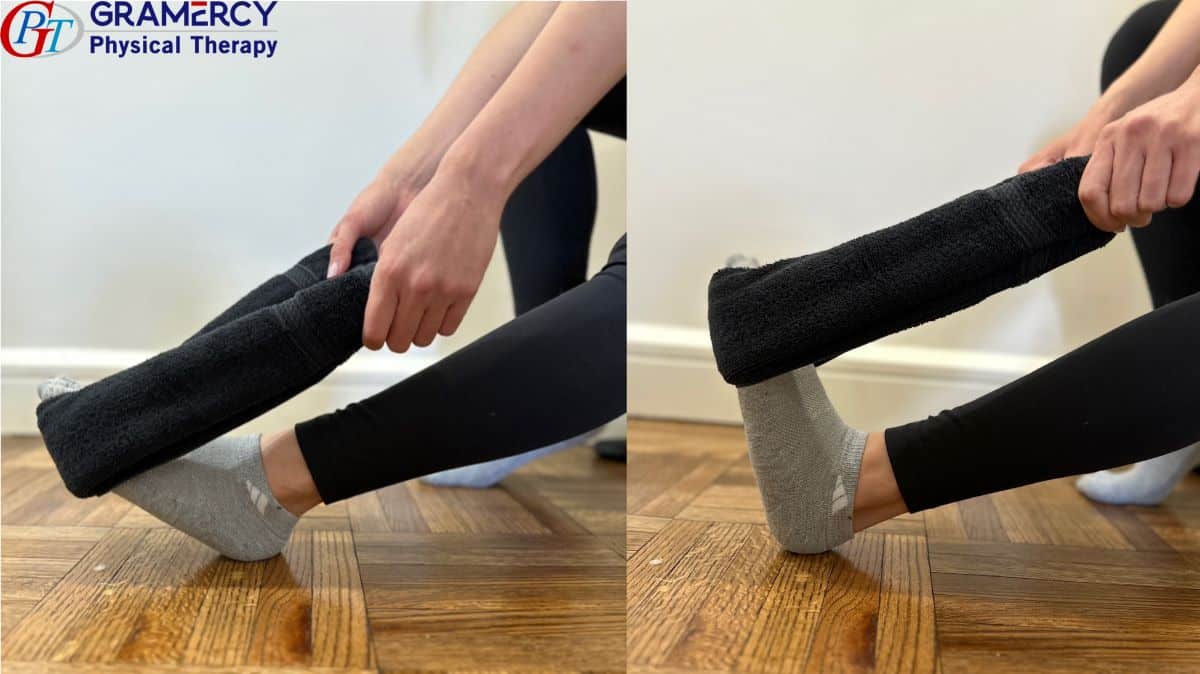
Assisted Toe Raises:
This exercise strengthens the tibialis anterior muscle and foot extensor muscles, responsible for dorsiflexion.
- Sit up straight on the edge of a chair with your feet flat on the floor.
- Place a towel or resistance band under the ball of your affected foot and hold the other end.
- Slowly lift your toes towards your shin, feeling the contraction on the top of your foot. Hold for 2 seconds then slowly lower your toes back down.
- Repeat 10-15 times
- Gradually reduce the help of the towel or theraband and simply move against gravity as you get stronger.
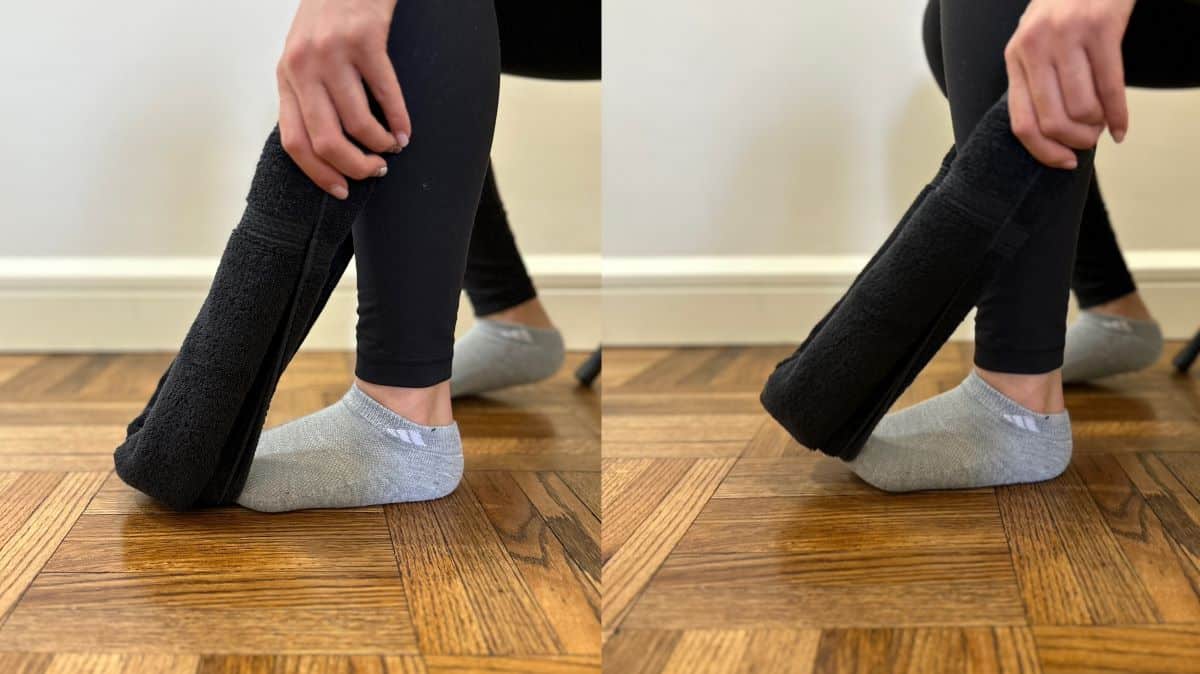
2A. Progression: Without the towel. Repeat 10-15 times.
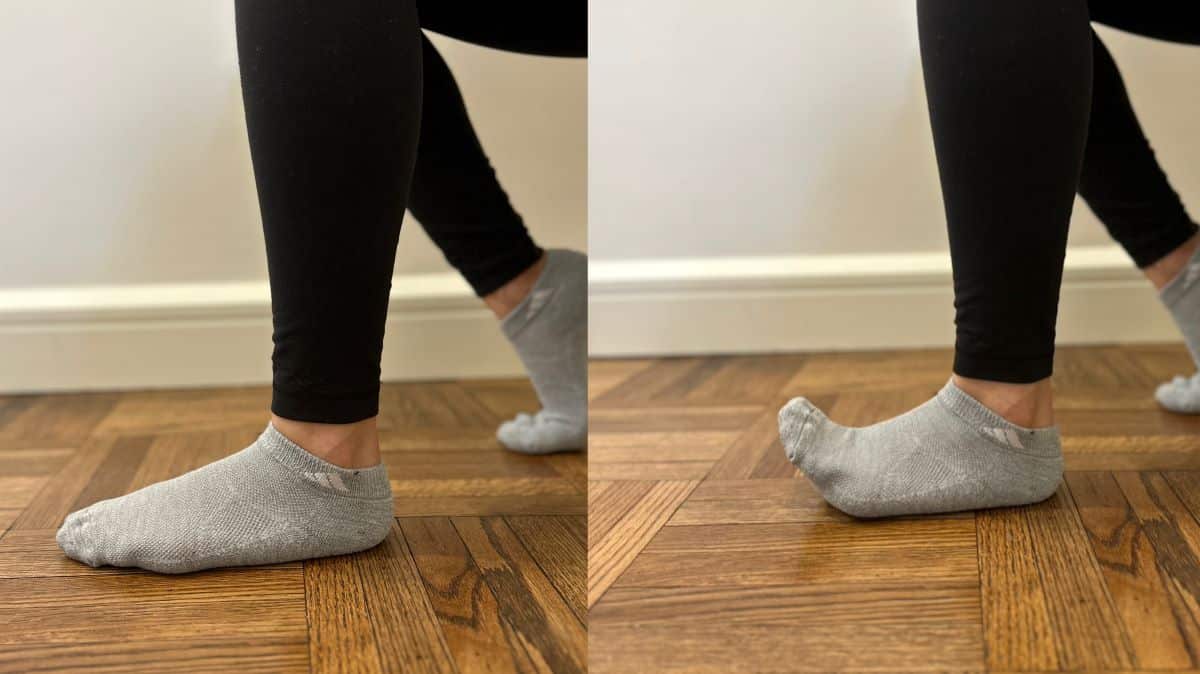
Assisted Seated Ankle Dorsiflexion:
This exercise further strengthens the dorsiflexor muscles while improving ankle mobility.
- Sit up straight on the edge of a chair with your affected leg extended and your other foot flat on the floor.
- Wrap a resistance band or towel around the balls of your foot. Hold both ends of the band in your hands.
- Gently pull your toes towards you, dorsiflexing your ankle, until you feel a muscle contraction at your shin and top of your foot. Hold for 2 seconds then slowly return to the starting position.
- Repeat 10-15 times.
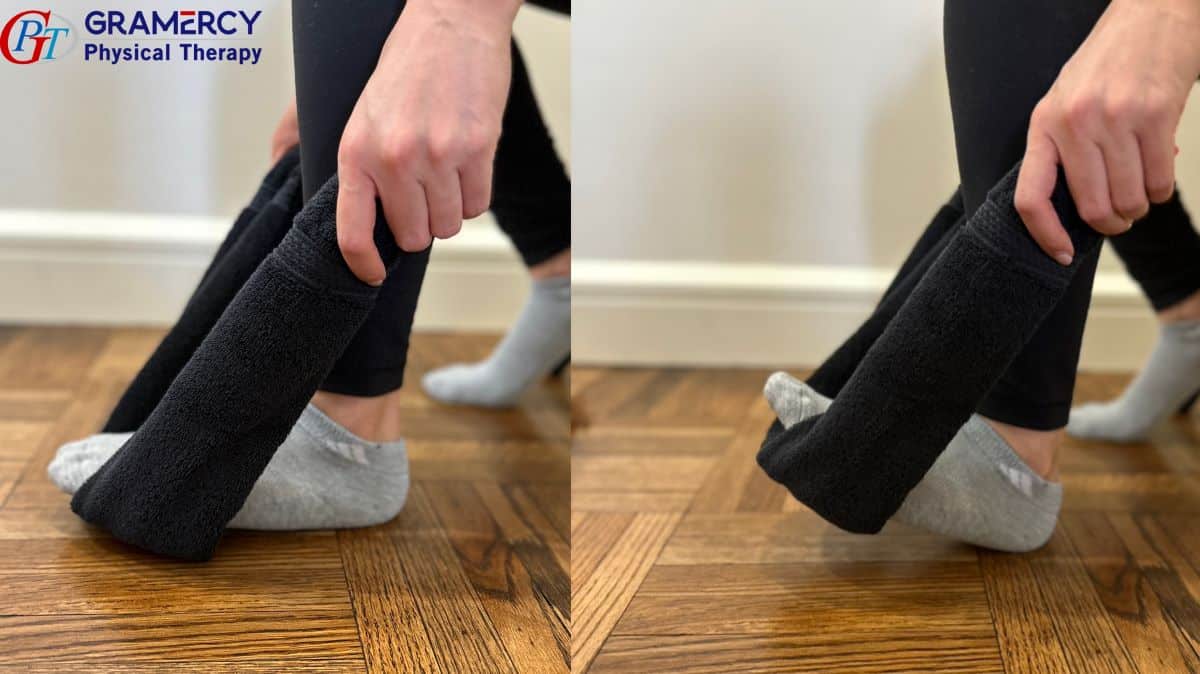
3A. Progression: Without the towel. Repeat 10-15 times.

Single-Leg Stance
This exercise improves balance and strengthens the muscles involved in maintaining stability while walking.
- Stand tall with your arms by your sides and hold onto a steady object for support if needed.
- Slowly lift one leg off the ground, keeping your opposite knee straight.
- Hold for as long as you can comfortably, aiming for 30 seconds initially and gradually increasing the hold time as you get stronger.
- Lower your leg slowly and repeat with the other leg.
- Perform 2-3 sets of 10 repetitions on each leg.
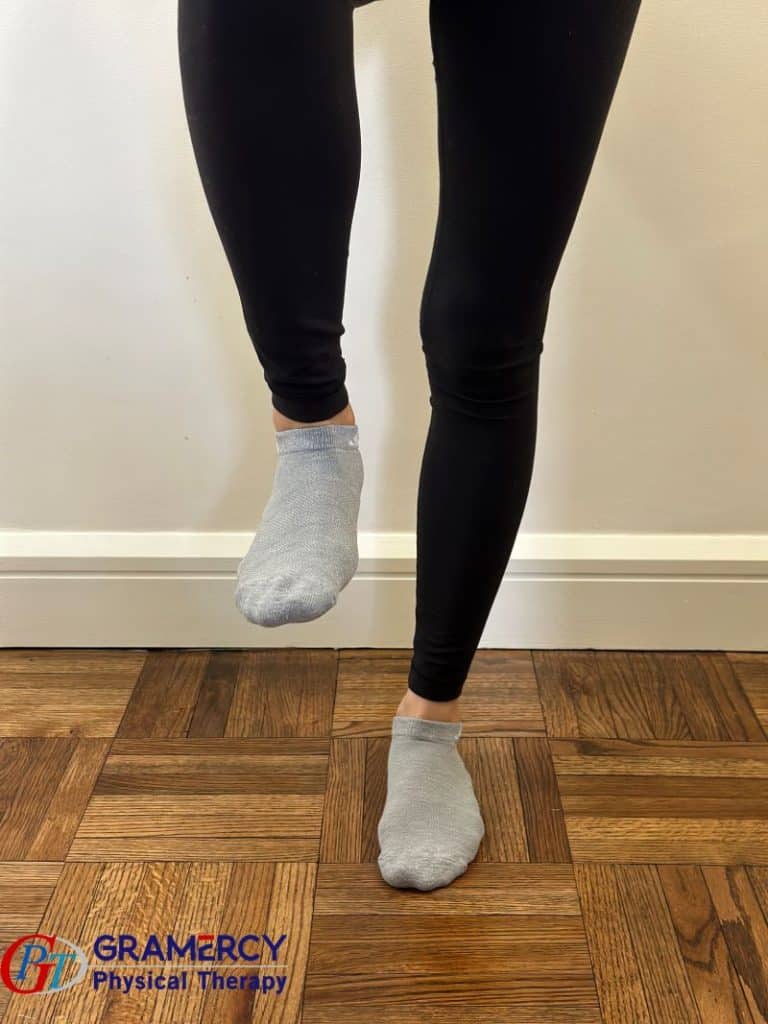
Calf Raises:
Calf raises strengthen the gastroc muscles, which aid in push-off of gait and indirectly aids in dorsiflexion and overall ankle stability.
- Stand with your feet shoulder-width apart and hold onto a steady object for support if needed.
- Rise up onto your toes, feeling the calves contract. Hold for 2 seconds then slowly lower your heels back down.
- Perform 2-3 sets of 15-20 repetitions.
- You can increase the difficulty by performing this exercise on a single leg or by holding ankle weights.

Along with consistent exercises to strengthen weakened muscles, we have found that the RehabStride™ AFO brace offers the greatest rehabilitation potential due to its design for utmost customization and its facilitation of muscle recovery.
Walking with RehabStride™ AFO Brace:


The RehabStride™ AFO brace can be a valuable tool in your foot drop recovery journey. Here’s how it can work in conjunction with your exercise routine:
- Promotes Push-Off:The innovative design of the RehabStride™ AFO brace encourages push-off during your gait cycle. This reduces calf muscle atrophy and increases dorsiflexion momentum required for effective heel strike.
- Facilitates Dorsiflexion motion:The adjustable tension cable system in the brace assists in lifting your foot during the swing phase of your gait, promoting dorsiflexion and a smoother heel strike.
- Seamless Integration:Designed to fit comfortably within most shoes, the RehabStride™ AFO brace allows for continued exercise while providing the necessary support for improved gait.
Take-away points:
- Consistency is Key:Regularly performing these exercises is crucial for strengthening the weakened muscles and improving dorsiflexion. Aim for at least 5 sessions per week, incorporating 10-15 repetitions of each exercise.
- Listen to Your Body:Start slowly and gradually increase the intensity and duration of your exercises as you get stronger. It’s important to listen to your body and take rest days when needed.
- Consult a Healthcare Professional:While these exercises are generally safe for most people, consulting with our rehabilitation specialists or accredited Physical Therapist via Video-Call can ensure they are tailored to your specific needs and condition. They also provide guidance on proper form and progression.
Conclusion:
Foot drop can be a frustrating condition but with dedication and consistent effort, you can regain control and improve your mobility. Incorporating the exercises outlined above while using the RehabStride™ AFO brace can significantly strengthen your weakened muscles, enhance dorsiflexion, and empower you to walk with renewed confidence. Remember, recovering from foot drop takes time and patience. Celebrate your progress, no matter how small, and focus on the regained independence a strong stride can bring.
